Groups in a position of power will categorize people according to ethnicity, race, religion or nationality employing an us versus them mentality.
Prevention Create universalistic institutions that foster social cohesion.
The ten stages of genocide

Exhibition United against genocide: Understand, question, prevent
Genocide is a human phenomenon that can be analysed and understood, and consequently, may be prevented. According to academic and activist Gregory H. Stanton, genocide is a process that develops in ten stages, described here. The stages do not necessarily follow a linear progression and may coexist. Prevention measures may be implemented at any stage.
Groups in a position of power will categorize people according to ethnicity, race, religion or nationality employing an us versus them mentality.
Prevention Create universalistic institutions that foster social cohesion.
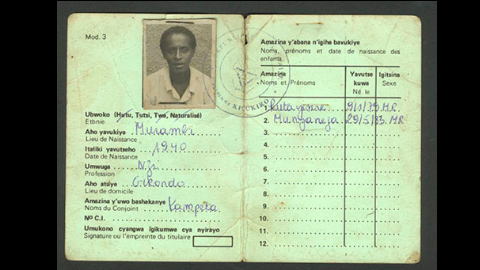
In 1926, Belgian colonizers introduced a system of identity cards in Rwanda that differentiated the Tutsi, Hutu, and Twa ethnic groups. These classification policies exacerbated tensions between the communities. Source: Kigali Genocide Memorial
People are identified as Jews, Roma or Tutsis, etc., and made to stand out from others with certain colours or symbolic articles of clothing.
Prevention Ban the symbols and hate speech and all clothing meant to discriminate against groups.
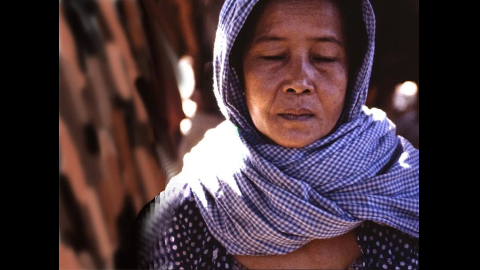
In the last six months of the Khmer Rouge regime, people from Cambodia’s Eastern Zone were marked by having to wear a blue-and-white checked scarf. In 1978, they were accused of having “Khmer bodies with Vietnamese minds”, deported from the Zone, and often murdered.
Source: Copyright 1986 Gregory H Stanton
A dominant group uses laws, customs, and political power to deny the rights of other groups. The powerless group may not be granted full civil rights or even citizenship.
Prevention Ensure full political empowerment and citizenship rights for all groups in a society. Discrimination on the basis of nationality, ethnicity, race or religion should be outlawed.
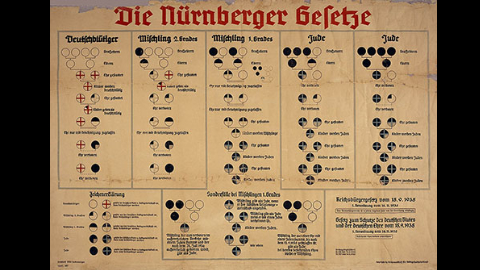
Chart of the Nuremberg Laws (1935) differentiating between the “Aryan race” (white circles), Jews (black circles) and persons of “mixed blood”.
Source: Montreal Holocaust Museum.
The diminished value of the discriminated group is communicated through propaganda. Parallels are drawn with animals, insects or diseases.
Prevention Promptly denounce and punish perpetrators and make hate crimes and speech culturally inacceptable. Sanction all incitements to commit genocide.
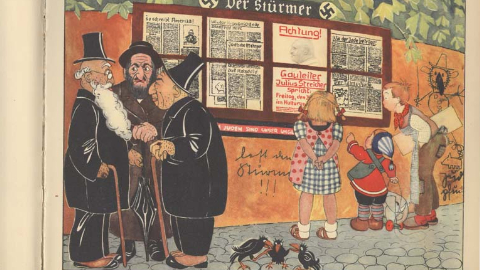
Taken from a children’s book, this illustration compares Jews to ravens. Germany, 1936. Source: Montreal Holocaust Museum
A state, its army or militia design genocidal killing plans.
Prevention Outlaw membership in these militias and sanction their leaders. Impose arms embargoes on the countries involved and create commissions of inquiry.
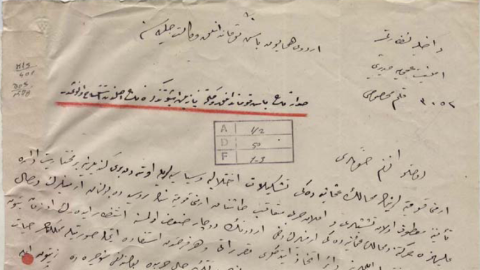
On April 24, 1915, the Minister of Internal Affairs of the Ottoman Empire issued an order to arrest influential Armenians. The community’s elite were eliminated within a few weeks. Source: Ottoman Archives
Propaganda is employed to amplify the differences between groups. Interactions between groups are prohibited, and the moderate members of the group in power are killed.
Prevention Protect these moderate members and human rights groups. Seize the assets of the oppressors and refuse their access to international travel.

Medical certificate granted to Avrum Rabner, Germany 1939. The stamp in the lower right-hand corner indicates that he was permitted to treat Jewish patients only. As of July 1938, it was illegal for Jewish doctors to treat “Aryan” patients. Source: Montreal Holocaust Museum
The victims are identified, separated and forced to wear symbols. Deportations, isolation and forcible starvation. Death lists are drawn up.
Prevention Humanitarian aid, armed international interventions or major support for the victims to ensure their ability to defend themselves.

Armenians were deported by train to the Syrian Desert. The entire Armenian population of Turkey was deported within a few months. The authorities were well aware that the chances of survival were nearly impossible. Source: Copyright Deutsche Bank AG, Historisches Institut
Victims are identified and isolated based on their ethnic or religious identity. Death lists are drawn up. In state sponsored genocides, members of victim groups may be forced to wear identifying symbols. Their property is often expropriated.
Prevention Regional organisations and the international community must mobilise themselves to assist or help the victims.
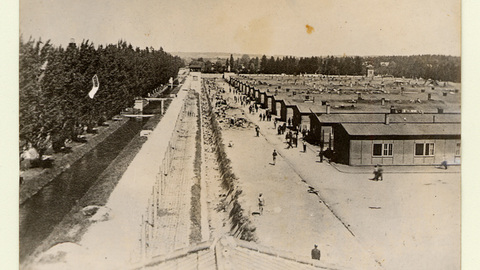
Millions of Jews were persecuted during their imprisonment in concentration camps. Dachau concentration camp, Germany.
Source : Montreal Holocaust Museum.
The massacres begin. The perpetrators see their actions as “extermination” since they do not consider their victims to be entirely human.
Prevention Only large-scale armed interventions can stop genocide. The international community must support the operations by providing air transport, equipment and financial support.
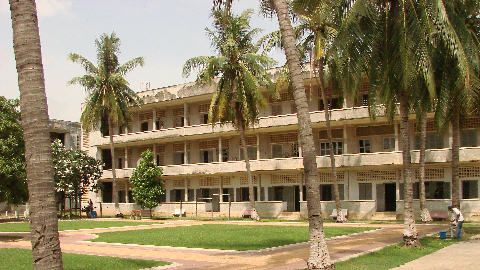
Site of prison S-21, also known as Tuol Sleng in Phnom Penh, Cambodia. Thousands of people were tortured and killed there during the genocide. It is believed that only ten survived. Source: Adam Jones, Flickr
The perpetrators of the genocide deny having committed their crimes. Victims are often blamed. Evidence is hidden and witnesses are intimidated.
Prevention An international tribunal or national court must prosecute the criminals. Public education.

Protest in Ottawa for the recognition of the Armenian genocide. Some 100 years later, Turkey still refuses to acknowledge the genocide. Source: Armenian National Committee of Quebec